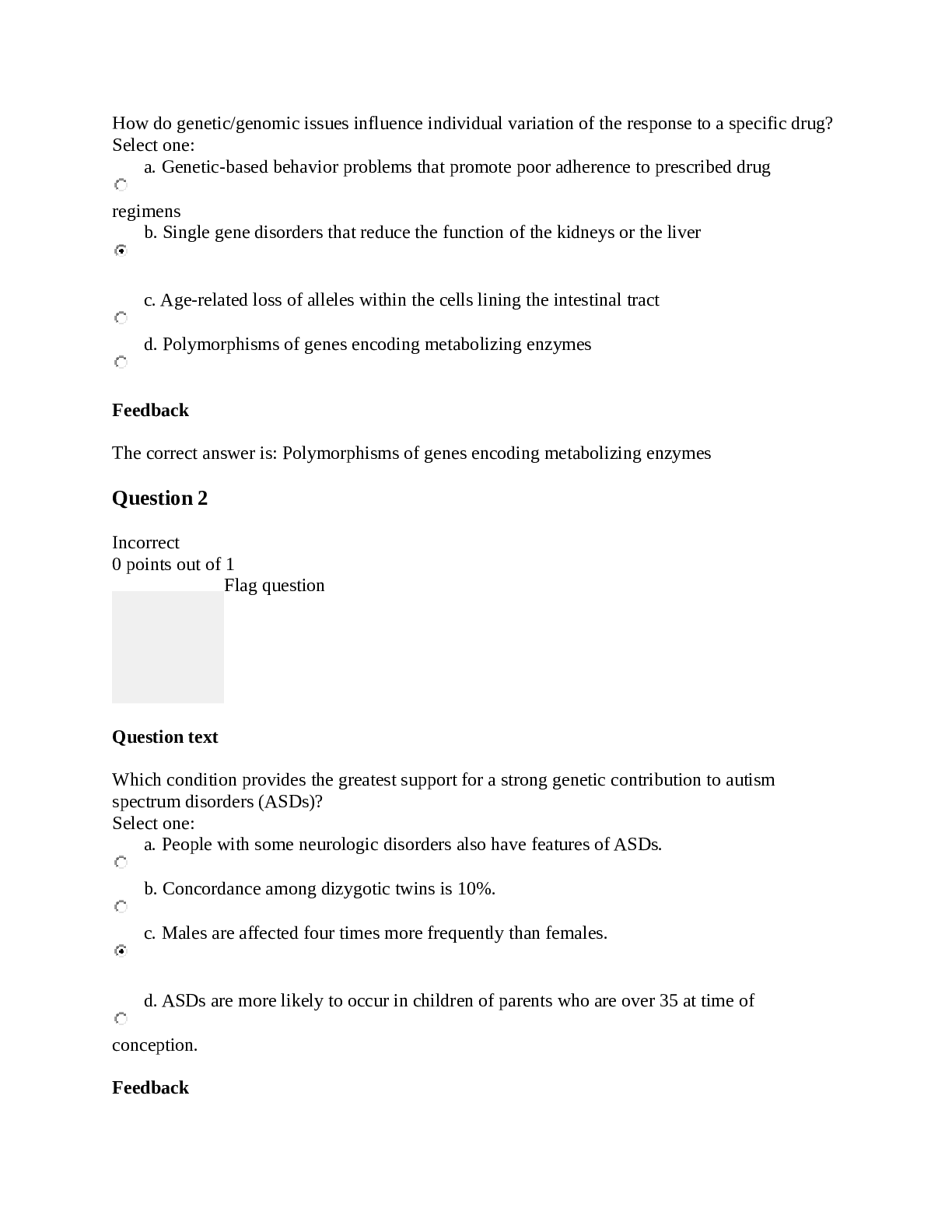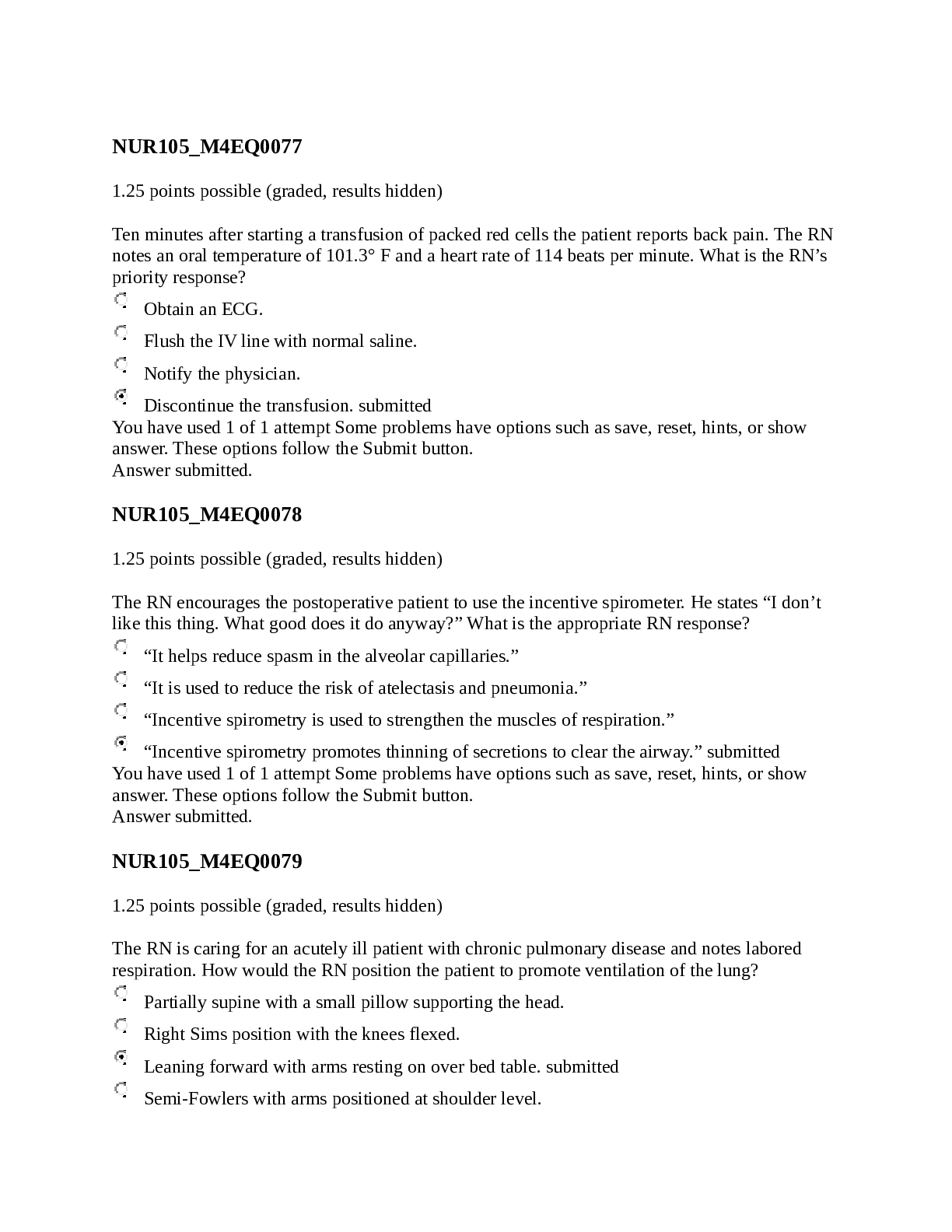Health Care > EXAM > DD GIC, RMGICs and Composers Exam 40 Questions with Answers,100% CORRECT (All)
DD GIC, RMGICs and Composers Exam 40 Questions with Answers,100% CORRECT
Document Content and Description Below
DD GIC, RMGICs and Composers Exam 40 Questions with Answers when are temporary restorations used? - CORRECT ANSWER emergency patient (broken/lost fillings); terminate a session; intermediate r... estoration; alleviate pain what considerations should be made when considering the use of a temporary restoration? - CORRECT ANSWER duration; aesthetics; durability what does GIC stand for? - CORRECT ANSWER glass ionomer cements when are GICs used? - CORRECT ANSWER temporary filling material; paediatric restoration; lining and base material in deep cavities what percentage of the GIC glass powder is silica? - CORRECT ANSWER 35-40% what is the liquid of GIC? - CORRECT ANSWER polyacrylic acid; water what is the powder of GIC? - CORRECT ANSWER aluminosilicate glass what percentage of the GIC glass powder is alumina? - CORRECT ANSWER 20-30% what percentage of the GIC liquid is polyacrylic acid? - CORRECT ANSWER 35% how many phases are in GIC setting reaction? - CORRECT ANSWER 2 phases what are the steps of GIC setting reaction? - CORRECT ANSWER dissolution; gelation; hardening what kind of reaction is the GIC setting reaction? - CORRECT ANSWER acid-base reaction which stage of GIC setting involves the release of ions from a silica case? - CORRECT ANSWER dissolution which phase is dissolution of GIC setting? - CORRECT ANSWER phase 1 which phase is gelation of GIC setting? - CORRECT ANSWER phase 2 what does dissolution involve in GIC setting? - CORRECT ANSWER acid begins to attach to the surface of the glass particles; the polyacrylic acid ionises and becomes negatively charged which sets up a diffusion gradient; cations move out of the glass what does gelation involve in GIC setting? - CORRECT ANSWER pH continues to rise; concentration of ions in the solution increases; cross-linking and hydrogen bonding occurs; initially hard sets it how does increased glass composition affect GICs? - CORRECT ANSWER decreases setting and working time how does increased particle size affect GICs? - CORRECT ANSWER increases setting time how does tartaric acid affect GICs? - CORRECT ANSWER decreases setting time and increases working time how does increased glass/water ratio affect GICs? - CORRECT ANSWER decreases setting time what are the advantages of GICs? - CORRECT ANSWER aesthetics; bond chemically to enamel and dentine; radiopaque; compatible with other dental restorative materials; biocompatible what are the disadvantages of GICs? - CORRECT ANSWER limited working time; long setting time; cracking formation; vulnerable to acids what does RMGIC stand for? - CORRECT ANSWER resin-modified glass ionomer cement what is the powder of RMGIC? - CORRECT ANSWER radiopaque fluoroaluminosilicate glass; pigments what is the liquid of RMGIC? - CORRECT ANSWER polyacrylic acid; hydroxyethylmethacrylate (HEMA); water what are the advantages of RMGICs? - CORRECT ANSWER all GIC benefits; low solubility; better aesthetics what are the disadvantages of RMGICs? - CORRECT ANSWER polymerisation shrinkage; HEMA is cytotoxic to osteoblasts and pulpal tissues what is the working time for GIC? - CORRECT ANSWER 2 minutes what is the working time for RMGIC? - CORRECT ANSWER 3 minutes 45 seconds what is the setting time for GIC? - CORRECT ANSWER 4 minutes what is the setting time for RMGIC? - CORRECT ANSWER 20 seconds Are GICs or RMGICs stronger? - CORRECT ANSWER RMGICs what is a compomer? - CORRECT ANSWER a fluoride releasing composite resin what are compomers composed of? - CORRECT ANSWER fluoroaluminosilicate glass; dimethacrylate monomer; photoinitiator; special resin; hydrophilic monomer what is phase 1 of the compomer reaction? - CORRECT ANSWER polymerisation results in the formation of 3D acidic copolymer what is phase 2 of the compomer reaction? - CORRECT ANSWER water uptake initiates an acid-base reaction between -COOH on the copolymer and the acid soluble glass to cause the release of fluoride what are the properties of compomers? - CORRECT ANSWER anticariogenic activity; do not chemically bond to enamel and dentine; polymerisation shrinkage; mechanical properties are the mechanical properties of compomers inferior or superior to composites? - CORRECT ANSWER inferior what is the percentage polymerisation shrinkage of a compomer? - CORRECT ANSWER 2-2.5% [Show More]
Last updated: 1 year ago
Preview 1 out of 4 pages
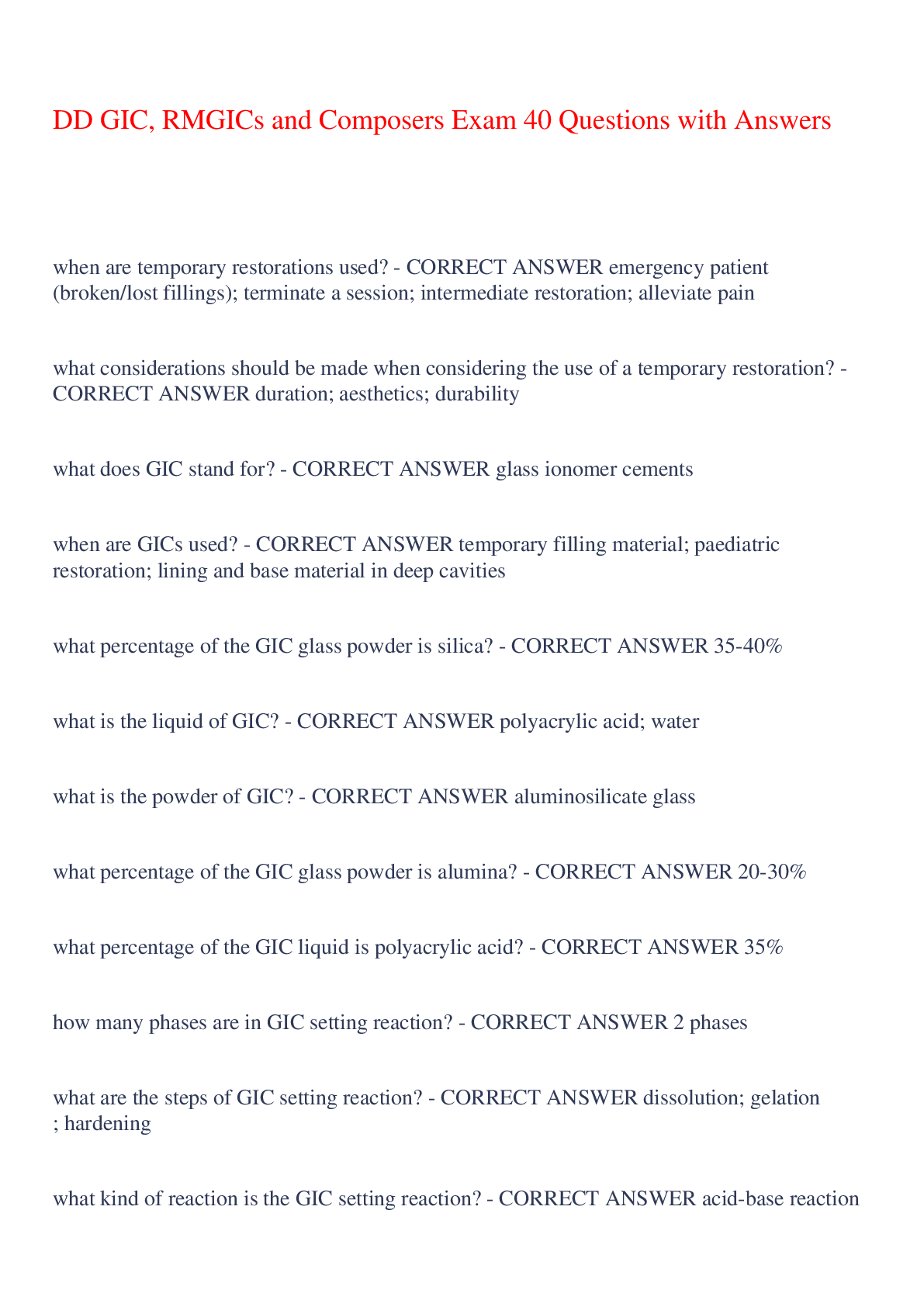
Buy this document to get the full access instantly
Instant Download Access after purchase
Add to cartInstant download
We Accept:

Reviews( 0 )
$7.50
Document information
Connected school, study & course
About the document
Uploaded On
May 19, 2023
Number of pages
4
Written in
Additional information
This document has been written for:
Uploaded
May 19, 2023
Downloads
0
Views
119














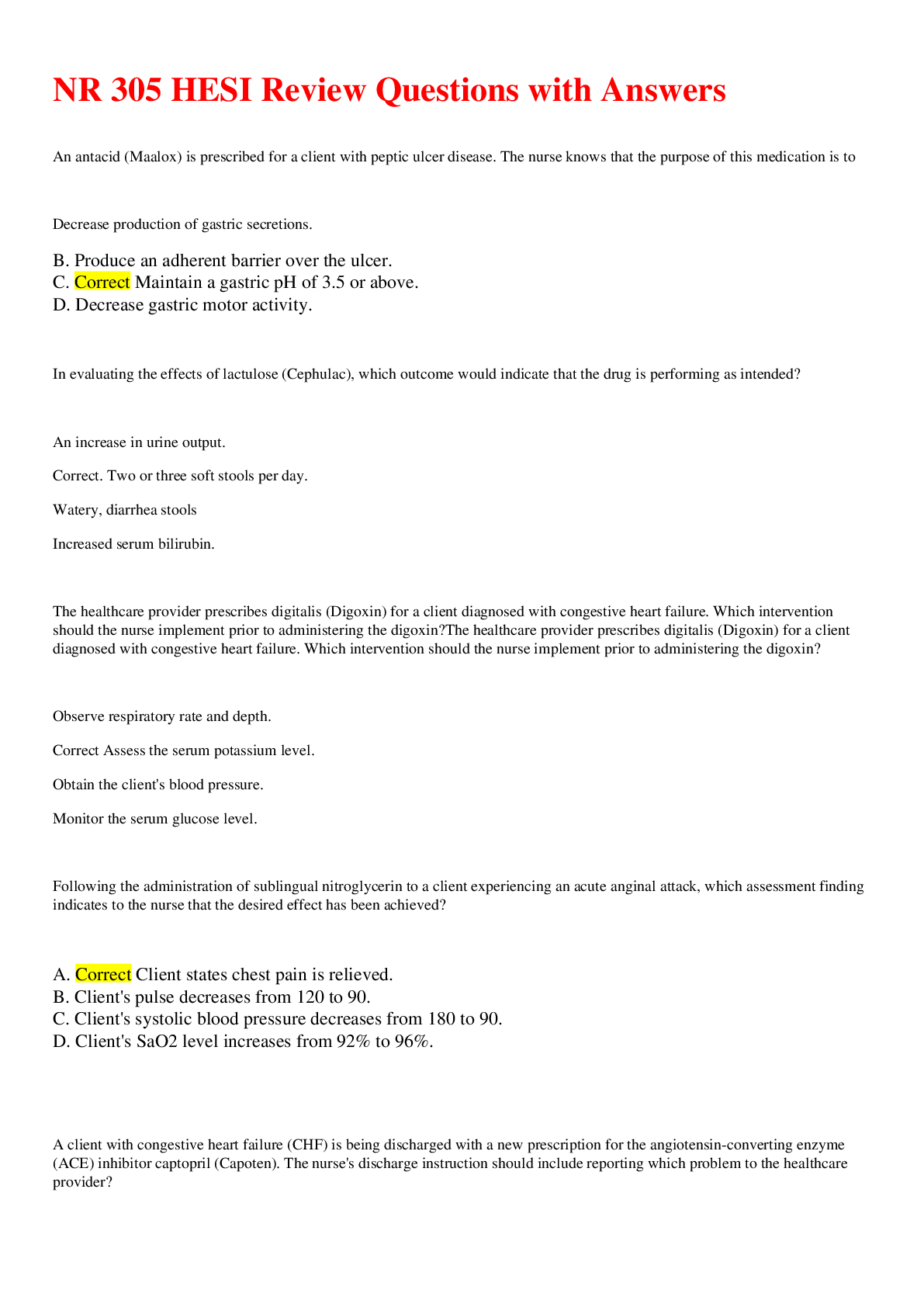
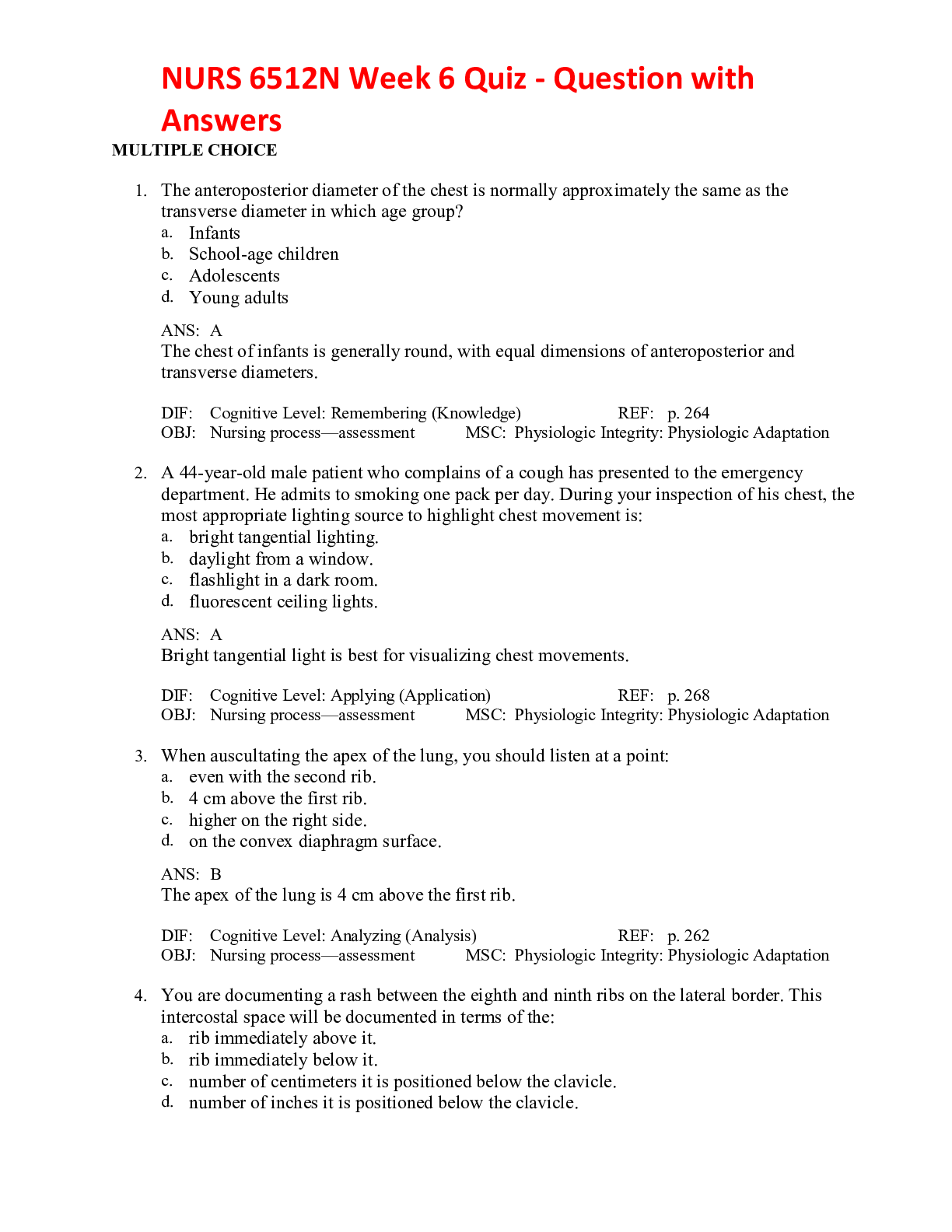
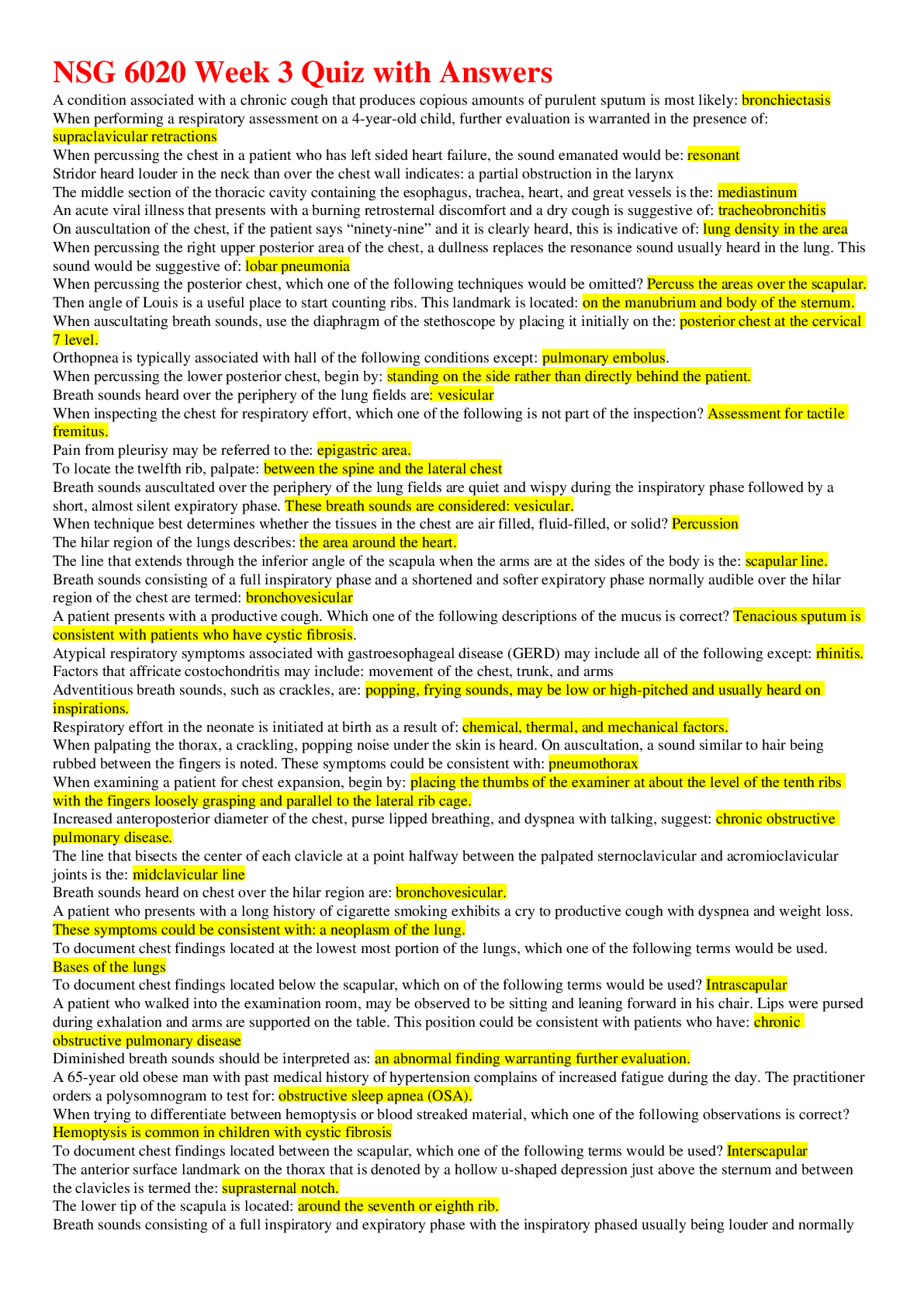
.png)
